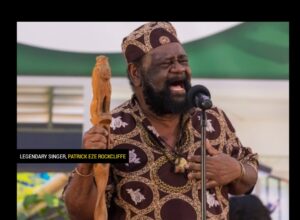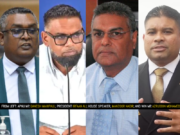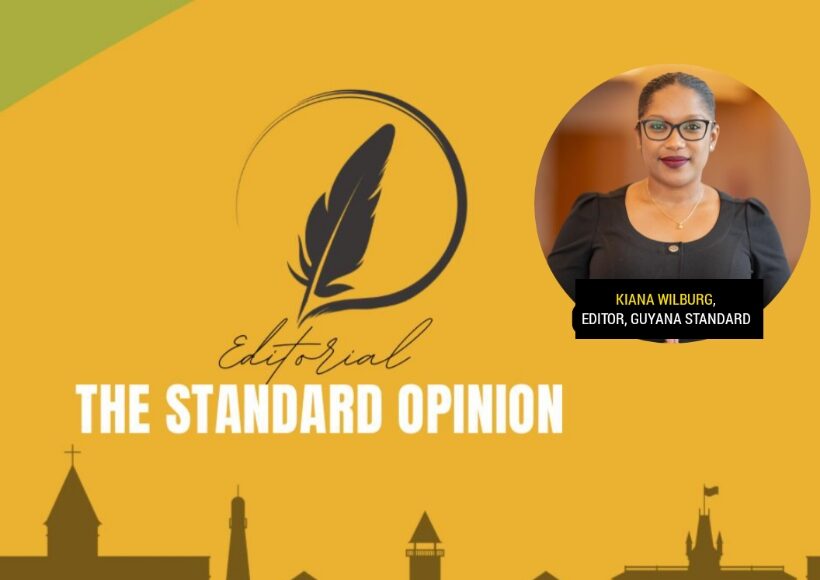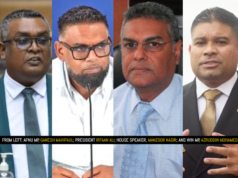When you speak of the preservation of Guyanese culture, specifically our folklore through music, Patrick Eze Rockcliffe stands as a legend amongst us. For 53 years, Rockcliffe, the founder of the Yoruba Singers, persevered against all social and economic odds to remind Guyanese of their powerful ancestral roots. Be it through his electrifying songs about Guyana’s mythical creatures like the Massacura Man, or his soulful renditions of the songs of yesteryear, Rockcliffe and his band have earned their place in Guyana’s musical hall of fame.
While the sounds of the Yoruba Singers are known to intoxicate the soul and invoke the undiluted pleasures of a stirring waistline, the power of their music extends far beyond this. Take for example, their song “Tell it like it is” (
[https://www.youtube.com/watch?v=VHIugfOXR_I](https://www.youtube.com/watch?v=VHIugfOXR_I “smartCard-embed”)
This masterpiece is one that allows for a spiritual reconnection with Guyana’s African roots, all while evoking a sense of pride in receiving such a timeless message from a Guyanese legend.
For decades, Rockcliffe and his band have shared their unique Guyanese sound and love for culture with local, regional and international audiences. So, when he was awarded on November 9, 2024 with an honorary doctorate degree by the University of Guyana, it was no surprise, just a long time comin’.
For his family, the moment was an emotional one, as the legend himself grace the stage of one of Guyana’s most prestigious institutions. He was honoured for his outstanding contributions to the performing arts and most importantly, his devotion to being an astute cultural preservationist.
While I was moved to tears of joy at the event, I wondered about the national support that could have been provided to my uncle Eze to ensure the Yoruba Singers brand received more exposure regionally and internationally. This thought process provoked other questions. I wondered about the state of Guyana’s music industry and whether there is a plan in place to develop the “Guyanese sound” as well as identify, nurture and promote talent countrywide and beyond these shores.
I was able to confirm, through my inquiries, that Guyana does not have an active strategic plan in place that addresses the advancement of the music industry.
In the interim, several measures , some old, some new, have been implemented to support the growth of our artists. The staple Mashramani Calypso, Soca, and Chutney competitions remain effective platforms for showcasing our diverse range of raw talent. Other complementary programmes have included songwriters’ clinics, mixing and mastering workshops for music producers, and stage performance workshops. There has also been a substantial increase in opportunities for artists to perform at State events throughout the year.
, some old, some new, have been implemented to support the growth of our artists. The staple Mashramani Calypso, Soca, and Chutney competitions remain effective platforms for showcasing our diverse range of raw talent. Other complementary programmes have included songwriters’ clinics, mixing and mastering workshops for music producers, and stage performance workshops. There has also been a substantial increase in opportunities for artists to perform at State events throughout the year.
Other supportive initiatives include government funding for music videos and album production as well as increased financial assistance for small studios under the Creative and Cultural Industries Grant. I was also pleased to learn that more than 150 Guyanese have benefitted from the grant.
While the government must be commended for its efforts, a strategic plan with clear targets and outcomes would strengthen their foundational works even further.
My inquiries pleasantly unearthed that a cultural policy, still in the process of being refined, is expected to outline key recommendations on the transformation of our music industry. While this author has not seen the updated draft policy, a preview of the 2017 version reflects that we may be on our way to finally having the development and protection of our musicians prioritized in a major way.
The 2017 draft recommends, for example, that there is the establishment of comprehensive intellectual property monitoring, royalty collections for musicians and enforcement of laws to protect their craft.
It also calls for initiatives to facilitate, both in and out of Guyana, the development of exceptional creative musical talent along with investments in the musical arts, covering from production to performance.
Another important recommendation speaks to the creation of a distinct Guyanese genre of music as influenced by our diverse heritage. I believe that this is particularly critical. We need a sound that is our own; not a sound that is a melting pot of other genres, or borrowed cultures and western influences. Finding our musical identity, the same way our brothers and sisters in Jamaica and Trinidad and Tobago did, strengthens pride for the Guyanese culture.
As the work continues on the refinement of our cultural policy, with a focus on the transformation of our music industry, we must also find creative ways to support the development of our artists. Certainly, we can tap into the flourishing relations shared with the U.S., Canada, the United Kingdom and other bilateral partners, to understand their approach to advancing the careers of their musicians.
The foregoing can be further enriched with a series of candid engagements with all stakeholders to hear their desired approach to modernizing, preserving and promoting the Guyanese sound.
Of course, this author concedes that there are a number of other important factors, not considered therein, which must be addressed to truly transform Guyana’s music industry. I proudly welcome those insights. But can’t we all agree that the development of our sound, and the empowerment of our artists deserves our collective support? Isn’t the transformation of our music industry, a long time comin’ as well?











